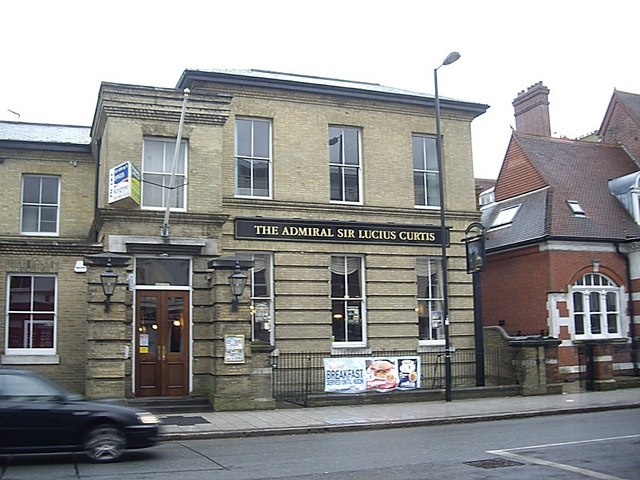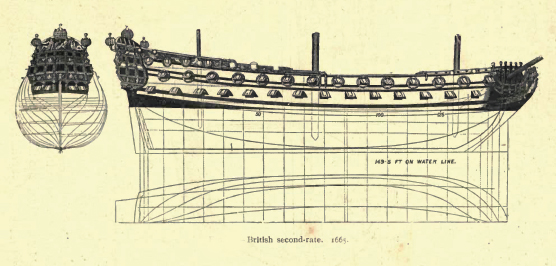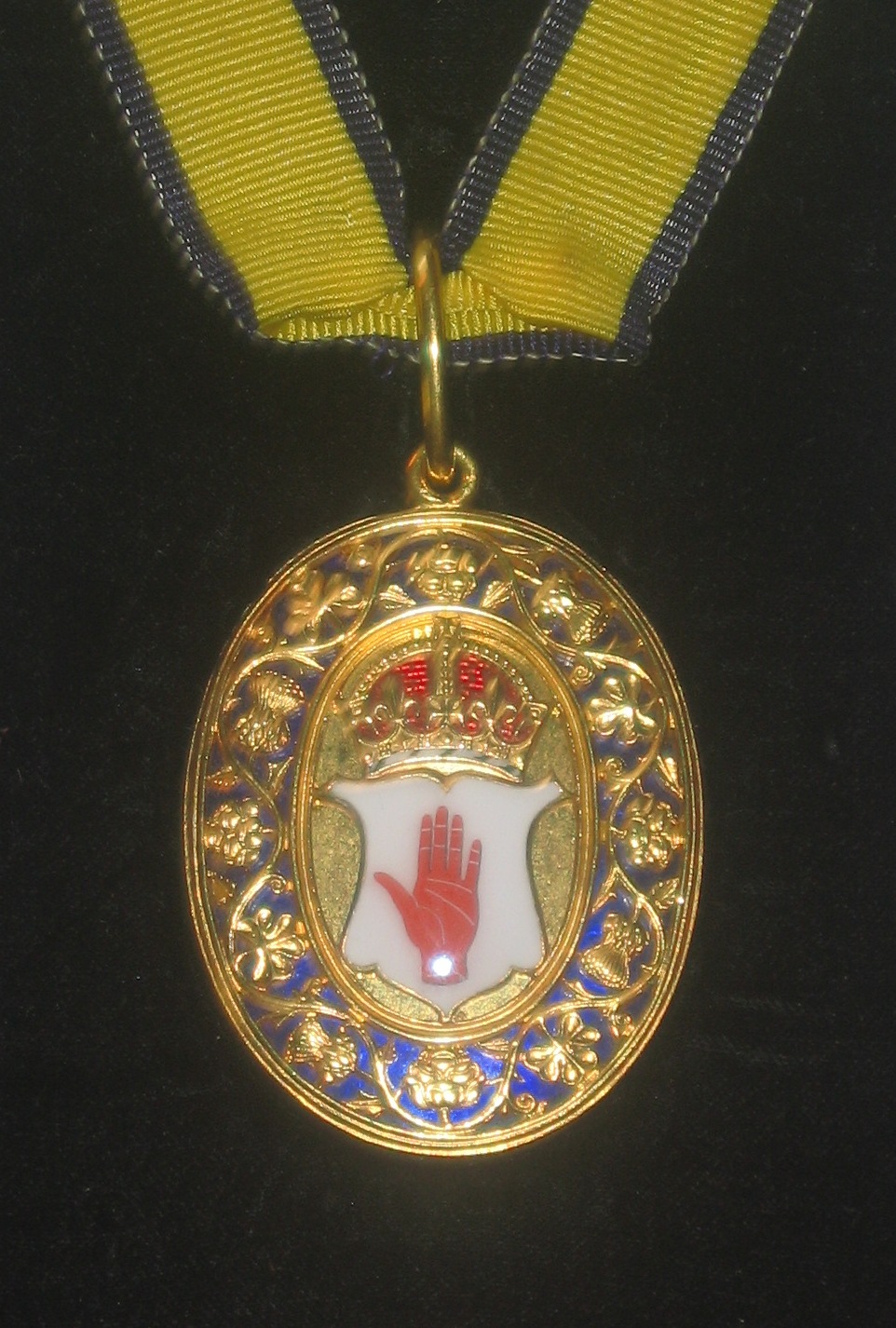|
Lucius Curtis
Admiral of the Fleet Sir Lucius Curtis, 2nd Baronet, KCB, DL (3 June 1786 – 14 January 1869) was a senior officer of the Royal Navy during the nineteenth century. The son of Sir Roger Curtis, 1st Baronet, Lord Howe's flag captain at the Glorious First of June, Lucius served during the Napoleonic Wars and was heavily involved in the Mauritius campaign of 1810. During this campaign, Curtis commanded the frigate HMS ''Magicienne'' with the blockade squadron under Josias Rowley and was still in command when the ship was destroyed at the Battle of Grand Port. ''Magicienne'' grounded on a coral reef early in the engagement and despite the best efforts of Curtis and his crew, the ship had to be abandoned, Curtis setting her on fire to prevent her subsequent capture. After Curtis was freed from captivity in December 1810, he was cleared of any wrongdoing in the loss of his ship and returned to his naval career. He later rose to become an Admiral of the Fleet. As his eldest s ... [...More Info...] [...Related Items...] OR: [Wikipedia] [Google] [Baidu] |
Portsea Island
Portsea Island is a flat and low-lying natural island in area, just off the southern coast of Hampshire in England. Portsea Island contains the majority of the city of Portsmouth. Portsea Island has the third-largest population of all the islands in the British Isles after the mainlands of Great Britain and Ireland; it also has the highest population density of any British Isle, and Portsmouth has the highest population density of any city in the UK outside of London. To the east of Portsea Island lies Hayling Island, separated by Langstone Harbour. To the west is the peninsular mainland town of Gosport, separated by Portsmouth Harbour. To the south, it faces into the Spithead area of the wider Solent. A narrow tidal channel along the northern edge of Portsea Island, known as Portsbridge Creek, separates Portsea Island from the mainland. Three roads connect Portsea Island to the mainland road network; the M275 motorway, the A3 London Road (split on two separate br ... [...More Info...] [...Related Items...] OR: [Wikipedia] [Google] [Baidu] |
Second-rate
In the rating system of the Royal Navy used to categorise sailing warships, a second-rate was a ship of the line which by the start of the 18th century mounted 90 to 98 guns on three gun decks; earlier 17th-century second rates had fewer guns and were originally two-deckers or had only partially armed third gun decks. A "second rate" was the second largest class of warships in a hierarchical system of six "ratings" based on size and firepower. They were essentially smaller and hence cheaper versions of the three-decker first rates. Like the first rates, they fought in the line of battle, but unlike the first rates, which were considered too valuable to risk in distant stations, the second rates often served also in major overseas stations as flagships. They had a reputation for poor handling and slow sailing. They were popular as flagships of admirals commanding the Windward and/or Leeward Islands station, which was usually a Rear-admiral of the red. Rating Typically measur ... [...More Info...] [...Related Items...] OR: [Wikipedia] [Google] [Baidu] |
Midshipman
A midshipman is an officer of the lowest rank, in the Royal Navy, United States Navy, and many Commonwealth navies. Commonwealth countries which use the rank include Canada (Naval Cadet), Australia, Bangladesh, Namibia, New Zealand, South Africa, India, Pakistan, Singapore, Sri Lanka, and Kenya. In the 17th century, a midshipman was a rating for an experienced seaman, and the word derives from the area aboard a ship, amidships, either where he worked on the ship, or where he was berthed. Beginning in the 18th century, a commissioned officer candidate was rated as a midshipman, and the seaman rating began to slowly die out. By the Napoleonic era (1793–1815), a midshipman was an apprentice officer who had previously served at least three years as a volunteer, officer's servant or able seaman, and was roughly equivalent to a present-day petty officer in rank and responsibilities. After serving at least three years as a midshipman or master's mate, he was eligible to take ... [...More Info...] [...Related Items...] OR: [Wikipedia] [Google] [Baidu] |
Channel Fleet
The Channel Fleet and originally known as the Channel Squadron was the Royal Navy formation of warships that defended the waters of the English Channel from 1854 to 1909 and 1914 to 1915. History Throughout the course of Royal Navy's history there had been different squadrons stationed in home waters. One of the earliest known naval formations to be based at Plymouth was called the Western Squadron which was the forerunner of the Channel Squadron that was later known as the Channel Fleet. In 1650 Captain William Penn, Commander-in-Chief, was charged with guarding the Channel from Beachy Head to Lands End with six ships. This system continued following the Restoration. It was the start of what was to become a Western Squadron. From 1690 the squadron operated out of Plymouth Dockyard during wartime periods, which was for most of the 18th century and early 19th century. In 1854 The Channel Squadron, sometimes known as the Particular Service Squadron, was established. The Channel ... [...More Info...] [...Related Items...] OR: [Wikipedia] [Google] [Baidu] |
HMS Queen Charlotte (1790)
HMS ''Queen Charlotte'' was a 100-gun first-rate ship of the line of the Royal Navy, launched on 15 April 1790 at Chatham. She was built to the draught of designed by Sir Edward Hunt, though with a modified armament. History In 1794 ''Queen Charlotte'' was the flagship of Admiral Lord Howe at the Battle of the Glorious First of June, and in 1795 under Captain Andrew Snape Douglas she took part in the Battle of Groix. In 1798, some of her crew were court-martialed for mutiny. Fate At about 6am on 17 March 1800, whilst operating as the flagship of Vice-Admiral Lord Keith, ''Queen Charlotte'' was reconnoitring the island of Capraia Capraia is an Italian island, the northwesternmost of the seven islands of the Tuscan Archipelago, and the third largest after Elba and Giglio. It is also a ''comune'' (Capraia Isola) belonging to the Province of Livorno. The island has a p ..., in the Tuscan Archipelago, when she caught fire. Keith was not aboard at the time and obs ... [...More Info...] [...Related Items...] OR: [Wikipedia] [Google] [Baidu] |
First-rate
In the rating system of the British Royal Navy used to categorise sailing warships, a first rate was the designation for the largest ships of the line. Originating in the Jacobean era with the designation of Ships Royal capable of carrying at least 400 men, the size and establishment of first-rates evolved over the following 250 years to eventually denote ships of the line carrying at least 80 guns across three gundecks. By the end of the eighteenth century, a first-rate carried no fewer than 100 guns and more than 850 crew, and had a measurement (burthen) tonnage of some 2,000 tons. Origins The concept of a rating system for British naval vessels dates to the accession of James I of England, following which the fleet was formally divided into "great", "middling" and "lesser" craft. A 1618 commission of enquiry added a further designation of "Ships Royal" for the largest and most prestigious vessels in the fleet, each capable of carrying at least 400 men. The first Ships Roy ... [...More Info...] [...Related Items...] OR: [Wikipedia] [Google] [Baidu] |
Oxford Dictionary Of National Biography
The ''Dictionary of National Biography'' (''DNB'') is a standard work of reference on notable figures from British history, published since 1885. The updated ''Oxford Dictionary of National Biography'' (''ODNB'') was published on 23 September 2004 in 60 volumes and online, with 50,113 biographical articles covering 54,922 lives. First series Hoping to emulate national biographical collections published elsewhere in Europe, such as the '' Allgemeine Deutsche Biographie'' (1875), in 1882 the publisher George Smith (1824–1901), of Smith, Elder & Co., planned a universal dictionary that would include biographical entries on individuals from world history. He approached Leslie Stephen, then editor of the '' Cornhill Magazine'', owned by Smith, to become the editor. Stephen persuaded Smith that the work should focus only on subjects from the United Kingdom and its present and former colonies. An early working title was the ''Biographia Britannica'', the name of an earlier eig ... [...More Info...] [...Related Items...] OR: [Wikipedia] [Google] [Baidu] |
British Admiralty
The Admiralty was a department of the Government of the United Kingdom responsible for the command of the Royal Navy until 1964, historically under its titular head, the Lord High Admiral – one of the Great Officers of State. For much of its history, from the early 18th century until its abolition, the role of the Lord High Admiral was almost invariably put "in commission" and exercised by the Lords Commissioner of the Admiralty, who sat on the governing Board of Admiralty, rather than by a single person. The Admiralty was replaced by the Admiralty Board in 1964, as part of the reforms that created the Ministry of Defence and its Navy Department (later Navy Command). Before the Acts of Union 1707, the Office of the Admiralty and Marine Affairs administered the Royal Navy of the Kingdom of England, which merged with the Royal Scots Navy and the absorbed the responsibilities of the Lord High Admiral of the Kingdom of Scotland with the unification of the Kingdom of G ... [...More Info...] [...Related Items...] OR: [Wikipedia] [Google] [Baidu] |
Baronet
A baronet ( or ; abbreviated Bart or Bt) or the female equivalent, a baronetess (, , or ; abbreviation Btss), is the holder of a baronetcy, a hereditary title awarded by the British Crown. The title of baronet is mentioned as early as the 14th century, however in its current usage was created by James I of England in 1611 as a means of raising funds for the crown. A baronetcy is the only British hereditary honour that is not a peerage, with the exception of the Anglo-Irish Black Knights, White Knights, and Green Knights (of whom only the Green Knights are extant). A baronet is addressed as "Sir" (just as is a knight) or "Dame" in the case of a baronetess, but ranks above all knighthoods and damehoods in the order of precedence, except for the Order of the Garter, the Order of the Thistle, and the dormant Order of St Patrick. Baronets are conventionally seen to belong to the lesser nobility, even though William Thoms claims that: The precise quality of this dignity is n ... [...More Info...] [...Related Items...] OR: [Wikipedia] [Google] [Baidu] |
Sir Josias Rowley, 1st Baronet
Admiral Sir Josias Rowley, 1st Baronet, (1765 – 10 January 1842), known as "The Sweeper of the Seas", was an Anglo-Irish naval officer who commanded the campaign that captured the French Indian Ocean islands of Réunion and Mauritius in 1810. Birth and family Rowley was born in 1765 the second son of Clotworthy Rowley and Letitia (née Campbell), of Mountcampbell, Drumsna, County Leitrim, in the West of Ireland. His father was a Barrister and MP for Downpatrick in the Irish Parliament. His paternal grandfather was Admiral of the Fleet Sir William Rowley, KCB. He had at least one brother William, MP for Kinsale and Recorder of Kinsale. Naval career He joined the Royal Navy in 1778, age 13, on HMS ''Suffolk'' in the West Indies, under the command of his uncle, Sir Joshua Rowley. Promoted to post captain in 1795, age 30, he commanded HMS ''Braave'' (40 guns) at the Cape of Good Hope and then (38 guns) in the East Indies. He also commanded (64 guns) and took part in ... [...More Info...] [...Related Items...] OR: [Wikipedia] [Google] [Baidu] |





